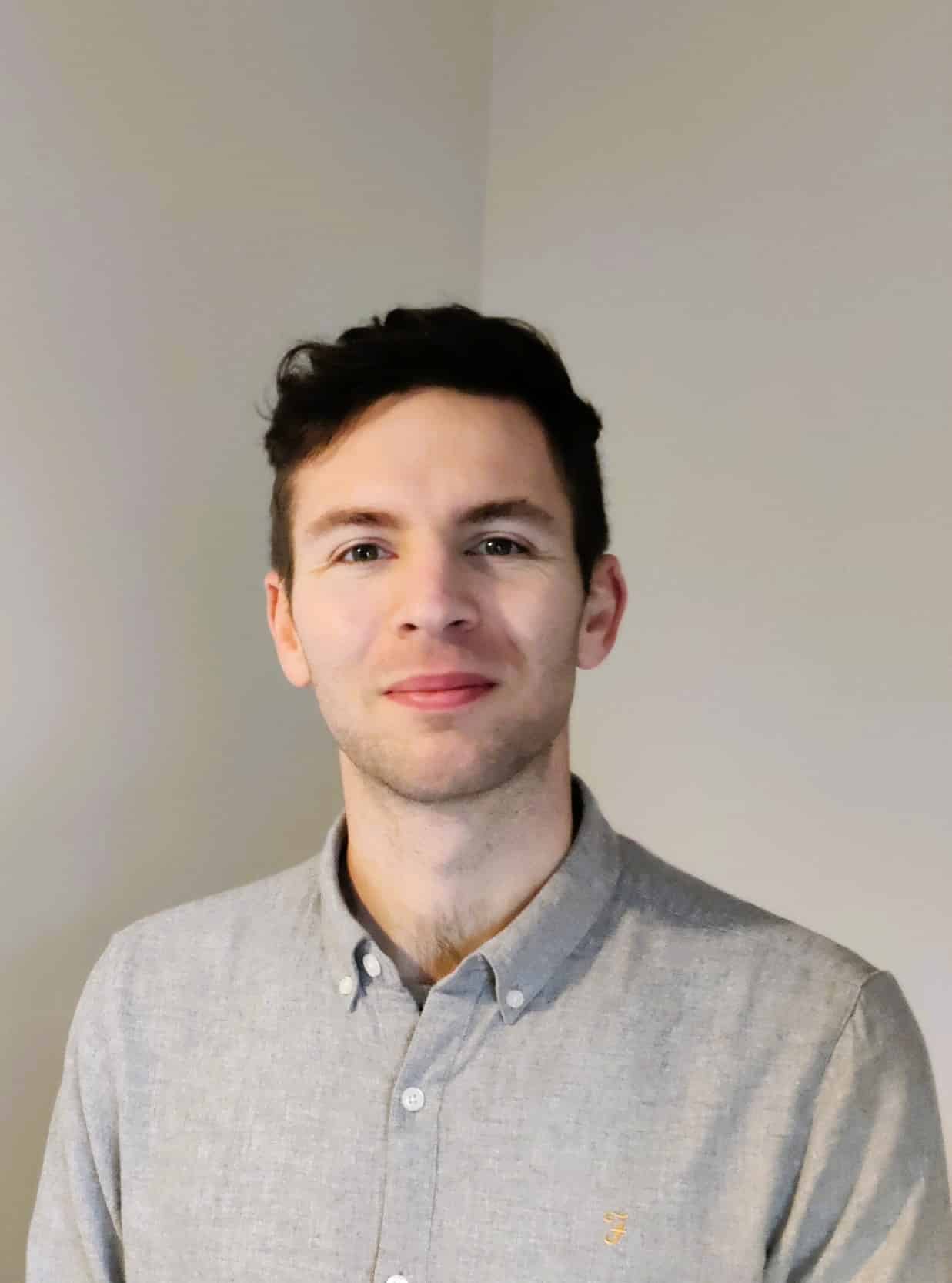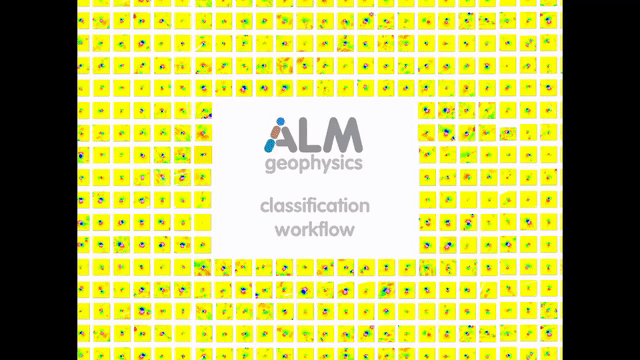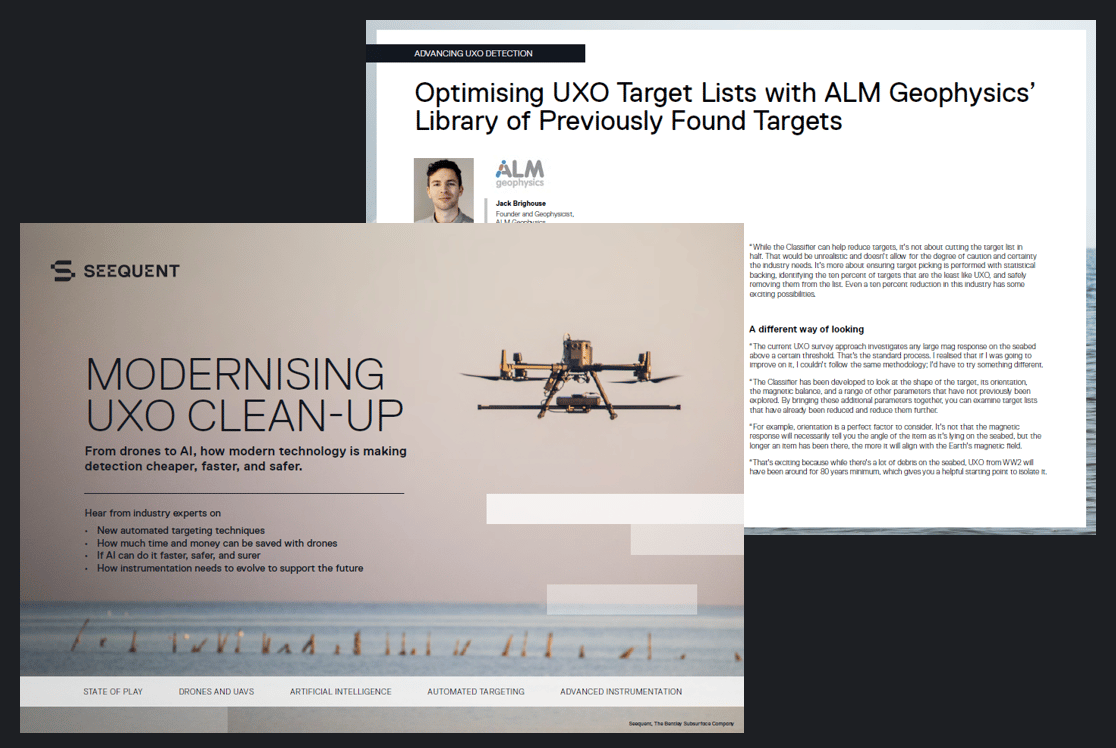
”For the industry, I think there are significant advantages in looking at new approaches like this. When you’re paying over £50,000 ($60,000) a day for a vessel, and it’s investigating just ten targets a day, a reduction of even ten percent represents a lot of days and money saved.
Jack BrighouseFounder and Geophysicist, ALM Geophysics
Reducing the number of targets by just 10% can significantly reduce the time and cost required for a Marine UXO survey. But which targets do you remove? ALM Geophysics founder Jack Brighouse is looking for fresh ways to rationalise UXO targets while enabling the sector to leverage new technology and get more out of their magnetic data.
“Before offshore windfarms or subsea cables can be installed, UXO campaigns are required to clear the seabed of dangerous items. For the last ten years, working as an offshore geophysicist, UXO consultant, and now with ALM Geophysics, I realized how many targets were being investigated that weren’t UXO and how much extra time, effort, and expense these investigations required.
“A deep dive into the data of 18 different UXO campaign projects showed that only around four percent of targets investigated were ultimately UXO. So, there’s enormous potential to improve this process, reduce the number of targets and save considerable investigation effort and money.
“I started to wonder how it could be improved and have been developing the ALM Classifier for about three and a half years now. At its root, the classifier compares new magnetic responses to the responses of previously found items from past projects. To know that a new magnetic response does not match those of previously found UXO across a plethora of variables provides a level of confidence never seen before in the marine UXO survey industry. It’s primarily a sophisticated optimisation algorithm with a large number of UXO simulations.

Maximising the value of your data
“At this point, with the help of several companies who’ve been incredibly supportive with their data, I have over three thousand targets in the Classifier from past projects. Of those, 230 are UXO, and I aim to gather enough extra data to double that and refine the abilities of the Classifier even further.
“Seequent has been the bedrock of this development. All this data is from contrasting projects and surveys and will have been processed differently. Oasis montaj can help unify opposing datasets and quickly even out the differences so I can get something comparable. It is possible to run some of the larger operations in Oasis montaj through the command prompt, which enables some of the data scraping required for each target. UXO Marine also has some excellent tools for extracting data, and while the final phase – the simulation – is done outside of Oasis montaj, indeed, most of the process happens within Oasis montaj.
“For the industry, I think there are significant advantages in looking at new approaches like this. When you’re paying over £50,000 a day for a vessel, and it’s investigating just ten targets a day, a reduction of even ten percent represents a lot of days and money saved.
“But it’s also about maximising the value of the data you’ve gathered and ensuring you’re extracting as much insight from it as possible to make the most informed decisions. And I don’t want it to be a Black Box solution. For this development to be used globally, UXO consultants need to understand the process behind it – which is why I have a paper coming out soon detailing all the methodology, tests, and results proving-out the classifier.
“UXO are mysterious things. For example, the North Sea is scattered with unexploded ordnance, most left over from WWI and WWII. While many are identical, they can often record different magnetic responses when surveyed. The more tools we can have to remove some of that mystery, to apply different parameters, and to see clearer into the depths, the better it will be for our industry and everyone who relies on it.”
For the full version of this feature where Jack also explores the advantage of broadening detection parameters, download our free eBook “Modernising UXO clean-up” and hear from other industry leaders how modern technology like drones and AI are making UXO detection cheaper, faster, and safer.






